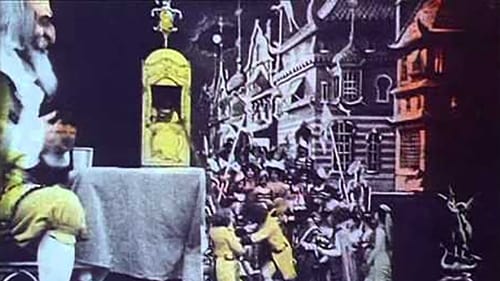Electric Tram Rides from Forster Square, Bradford (1902)
Genre : Documentary
Runtime : 3M
Synopsis
Electric Tram Rides from Forster Square, Bradford

A baker's assistant throws a handful of dough at a rat. The dough sticks to the side of a barrel and the assistant proceeds to sculpt the dough into various faces and shapes. There is some experimental use of stop motion.

Likely the world's oldest color film, shot in 1902. Like other works by Edward R. Turner, there is no indication that it was ever relesead to the public before its discovery in 2012.

The chaos and charm of Edwardian street life is captured to great effect here as young lads throng this West Midlands street. 'The pictures we are taking will be shown Monday Jan 13th', proclaims the showman's advert. The medley of flat caps, bowlers, boaters and top hats offers engaging vivid social insight, showing the classes mingling together yet clearly defined.

This is a moving picture that moves. Positively the greatest magical picture ever offered. A Hindoo magician appears and dances for the entertainment of six pretty maidens. Then, to the astonishment of all, he runs up the wall, dances and turns handsprings in mid-air, introducing many tricks that are entirely new in animated photography. The most puzzling of all the mystical series. (Star Film Catalog)

Lina Esbrard performs a serpentine dance.

This picture depicts the eruption of the volcano by which over 30,000 souls were hurled into eternity. The numerous explosions which took place during the eruption are plain to be seen. Thousands upon thousands of tons of molten lava, sand, rocks and steam are thrown high in the air and descend with crushing force upon the unfortunate inhabitants of the doomed city of St. Pierre. This is the worst calamity which occurred since a similar eruption by Mt. Vesuvius when Pompeii was destroyed. (Lubin Catalog)

The setting of this fantastic scene represents the hall of an old chateau in which a miser has locked up seven large bags containing his wealth. Satan, who has made his way into the chateau, puts the seven bags in a strong box, and makes with his hands some cabalistic motions. The miser comes into the hall and is greatly astonished to find his fortune missing. He opens the coffer and immediately the bags leap out. He gathers them up and puts them back into the coffer. When he opens it again he finds that they have been transformed into seven young girls, who rush out and chase after him, beating him unmercifully. They shut him up in the coffer from which his gold has vanished. The miser pushes open the lid of the coffer, and to his profound despair finds that both young girls and money have disappeared. (This view is most sensational in its mysterious scenes.) (Star Film Catalog)

Georges Méliès' adaptation of Jonathan Swift's "Gulliver's Travels" is most distinguished, today, for being a color film of the classic story. Color was rare in 1902 (and many years after) as non-tinted color has to be hand painted on the film; this was an arduous task. Also notable is the film's short running time of approximately five minutes. Much of the original work is not covered, but viewers were expected to be familiar with the story, and enjoy the filmed highlights. There are a couple of scenes missing; according to contemporary reports, Gulliver's shipwreck was certainly included. You can do a lot in a few minutes, as Mr. Méliès includes a re-make of his own "Une partie de cartes" (1896), which already looked like something previously covered by the Lumière Brothers.

When Edward VII was crowned, it was a time of great confidence and pride in the British Empire, as shown here by the extravagant and sometimes exotic horse-drawn floats.

Believed to be the first film that features Manchester United in their first season as 'Manchester United', rather than 'Newton Heath' as they were known at the time.

It is winter and a couple invites an old woman to eat. The old woman then becomes a fairy and makes the spring appears.

A short melodrama based on Hans Christian Andersen's harrowing tale. A poor little girl tries to sell matchsticks in the freezing December cold. She lights matches for some light and warmth. There are visions: a fireplace, dinner, a Christmas tree. She sees her dead mother, welcoming her.

Country rube thinks what he sees on the movie screen is real. He jumps out of his seat to try to stop a kissing scene.

Porter's sequential continuity editing links several shots to form a narrative of the famous fairy tale story of Jack and his magic beanstalk. Borrowing on cinematographic methods reminiscent of 'Georges Melies' , Porter uses animation, double exposure, and trick photography to illustrate the fairy's apparitions, Jack's dream, and the fast growing beanstalk.

An early hand-tinted adaptation of Ali Baba.












